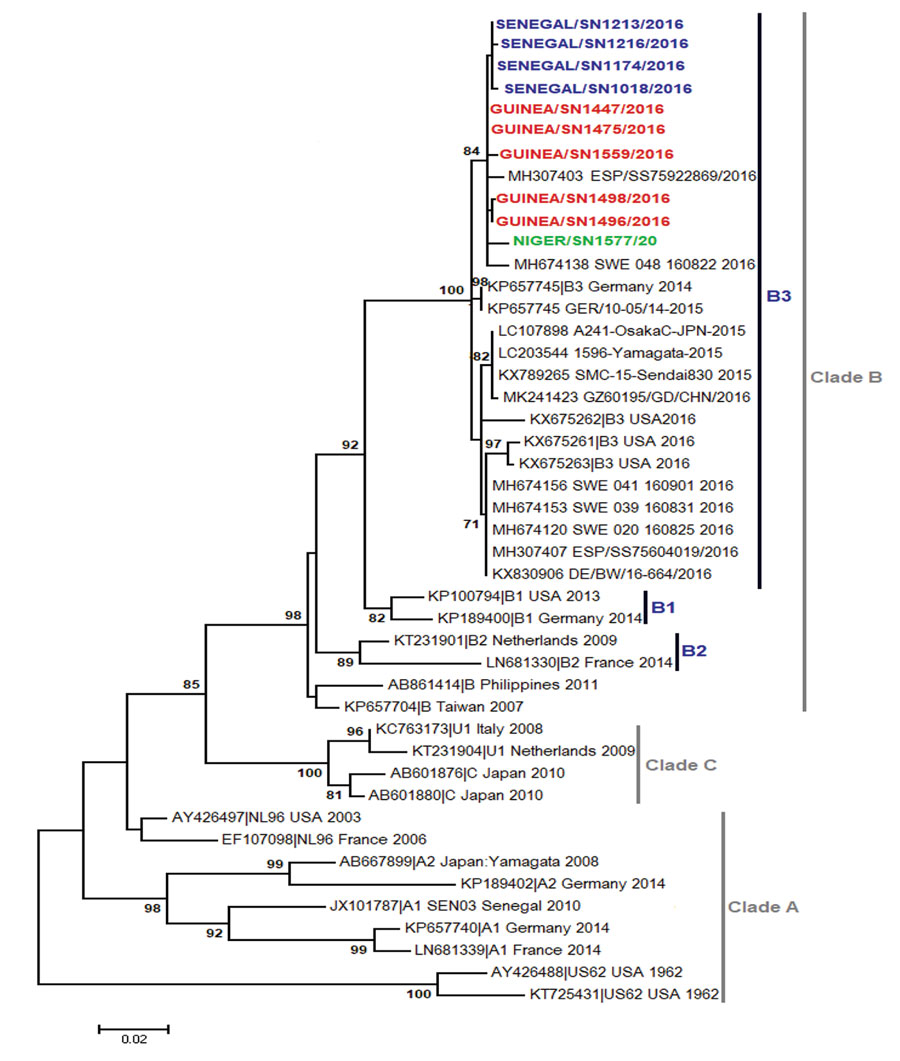Volume 26, Number 9—September 2020
Dispatch
Enterovirus D68 Subclade B3 in Children with Acute Flaccid Paralysis in West Africa, 2016
Figure 2

Figure 2. Phylogenetic relationships among EV-D68 strains detected in Guinea (red), Niger (green), and Senegal (blue), June–September 2016. We used the maximum-likelihood method based on the Tamura-Nei model method in MEGA7 (http://www.megasoftware.net) to generate the phylogenetic tree constructed on the viral protein 1 region of EV-D68 strains. Sequences are identified by GenBank accession number, country, and period of detection. The phylogenetic tree is rooted by the oldest EV-D68 sequence in GenBank, the Fermon strain. We performed 1,000 bootstrap replications to determine the consensus tree; support for nodes present in >70% of the trees are annotated. EV-D68, enterovirus D68.
Page created: May 26, 2020
Page updated: August 19, 2020
Page reviewed: August 19, 2020
The conclusions, findings, and opinions expressed by authors contributing to this journal do not necessarily reflect the official position of the U.S. Department of Health and Human Services, the Public Health Service, the Centers for Disease Control and Prevention, or the authors' affiliated institutions. Use of trade names is for identification only and does not imply endorsement by any of the groups named above.